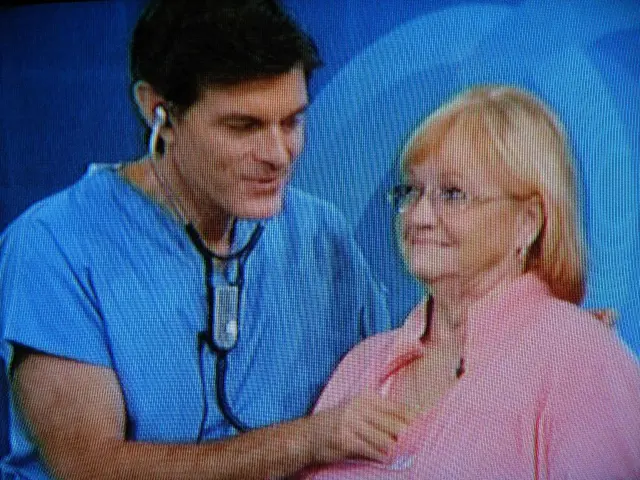Differentiating Between V-Tach and SVT: Therapeutic Approaches and Prognoses
News Article: Long-term Treatment Options for Ventricular Tachycardia and Supraventricular Tachycardia
Ventricular Tachycardia (VT) and Supraventricular Tachycardia (SVT) are two types of heart rhythm disorders, characterised by a fast heartbeat. Both conditions can cause symptoms such as heart palpitations, chest pain, shortness of breath, dizziness, lightheadedness, or loss of consciousness.
In the case of VT, long-term treatment options primarily include implantable cardioverter-defibrillators (ICDs), catheter ablation, and antiarrhythmic drug therapy. For patients with structural heart disease or sustained VT/ventricular fibrillation, an ICD is a key long-term therapy to prevent sudden cardiac death. ICDs detect and terminate VT episodes automatically. Radiofrequency catheter ablation, targeting the arrhythmogenic focus, has success rates exceeding 75% and is increasingly an important modality. Antiarrhythmic medications such as amiodarone and lidocaine may also be used to suppress VT episodes pharmacologically. For patients with heart failure, cardiac resynchronization therapy (CRT) may improve ventricular function and reduce ventricular electrical storms, though device reprogramming may be required if arrhythmias are triggered by CRT pacing.
SVT, on the other hand, is rarely life-threatening. The long-term management often involves medications like beta-blockers or calcium channel blockers, and catheter ablation is also a common definitive treatment. Medications such as beta-blockers, calcium channel blockers (e.g., verapamil), digoxin, and occasionally adenosine for acute termination are widely used. When recurrent or symptomatic SVT is poorly controlled by drugs, catheter ablation of the accessory pathways or ectopic foci in the atria is highly effective and often curative.
The outlook for people with VT depends on the underlying cause and whether the person has structural heart disease. Ischemic cardiomyopathy-induced VT (IC-VT) carries a poor outlook, with up to 50% of cases causing death within 2 years without treatment. However, placing an ICD significantly improves survival rates for IC-VT. SVT is more manageable, with a favourable outlook in many cases. Idiopathic VT carries a favourable outlook, while the prognosis for SVT is generally good.
Lifestyle strategies such as avoiding or limiting caffeine and alcohol intake, not smoking, getting sufficient rest, and performing vagal maneuvers may help reduce SVT episodes. A medical history assessing the person's underlying risk factors for VT is conducted during diagnosis. Diagnostic procedures for VT and SVT may include various tests such as electrocardiogram (ECG), echocardiogram, Holter monitor, and stress test.
In summary, the choice of treatment strategies for VT and SVT depends on the type of tachycardia, underlying heart disease, symptoms, and patient-specific factors such as tolerance for medications and risk of sudden cardiac arrest. Electrophysiological studies guiding ablation remain a cornerstone long-term approach, increasingly supported by advancements in mapping and monitoring technology. Anyone who experiences symptoms of VT or SVT should seek immediate medical attention.
- Maintaining cardiovascular health is essential in managing medical-conditions like Ventricular Tachycardia (VT) and Supraventricular Tachycardia (SVT), as both are heart rhythm disorders characterized by a fast heartbeat.
- Science and medical advancements have led to a range of long-term treatment options for VT, such as implantable cardioverter-defibrillators (ICDs), catheter ablation, antiarrhythmic drug therapy, and cardiac resynchronization therapy (CRT). Similarly, SVT management often includes medications like beta-blockers or calcium channel blockers, with catheter ablation as a common definitive treatment.
- Health-and-wellness strategies, such as avoiding caffeine and alcohol, getting sufficient rest, and performing vagal maneuvers, may help reduce SVT episodes; however, a thorough medical-conditions assessment, including a medical history, and various diagnostic tests are crucial during the diagnosis process for both VT and SVT.




